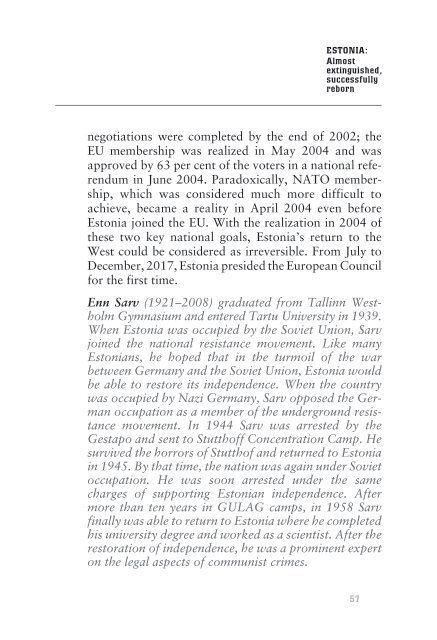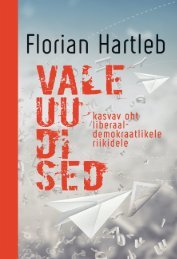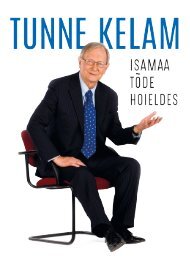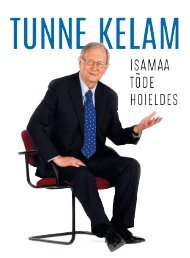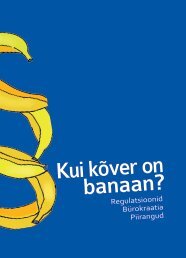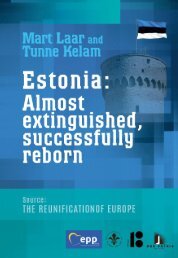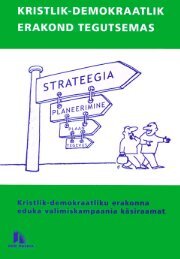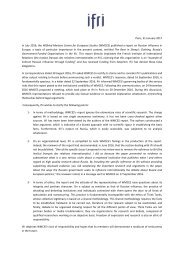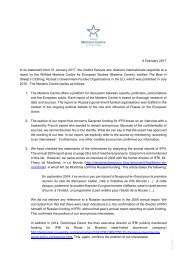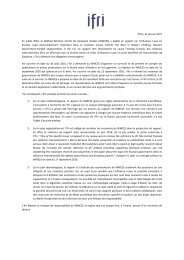ESTONIA: Almost extinguished, successfully reborn
The following text is the shortest possible review to help inform friends and guests from abroad about Estonia’s experience with foreign occupation and totalitarianism as well as its road to peacefully re-establishing national inde-pendence on the basis of democracy. Tunne Kelam Member of the European Parlament
The following text is the shortest possible review to help inform
friends and guests from abroad about Estonia’s experience with
foreign occupation and totalitarianism as well as its road to
peacefully re-establishing national inde-pendence on the basis
of democracy.
Tunne Kelam
Member of the European Parlament
Create successful ePaper yourself
Turn your PDF publications into a flip-book with our unique Google optimized e-Paper software.
<strong>ESTONIA</strong>:<br />
<strong>Almost</strong><br />
<strong>extinguished</strong>,<br />
<strong>successfully</strong><br />
<strong>reborn</strong><br />
negotiations were completed by the end of 2002; the<br />
EU membership was realized in May 2004 and was<br />
approved by 63 per cent of the voters in a national referendum<br />
in June 2004. Paradoxically, NATO membership,<br />
which was considered much more difficult to<br />
achieve, became a reality in April 2004 even before<br />
Estonia joined the EU. With the realization in 2004 of<br />
these two key national goals, Estonia’s return to the<br />
West could be considered as irreversible. From July to<br />
December, 2017, Estonia presided the European Council<br />
for the first time.<br />
Enn Sarv (1921–2008) graduated from Tallinn Westholm<br />
Gymnasium and entered Tartu University in 1939.<br />
When Estonia was occupied by the Soviet Union, Sarv<br />
joined the national resistance movement. Like many<br />
Estonians, he hoped that in the turmoil of the war<br />
between Germany and the Soviet Union, Estonia would<br />
be able to restore its independence. When the country<br />
was occupied by Nazi Germany, Sarv opposed the German<br />
occupation as a member of the underground resistance<br />
movement. In 1944 Sarv was arrested by the<br />
Gestapo and sent to Stutthoff Concentration Camp. He<br />
survived the horrors of Stutthof and returned to Estonia<br />
in 1945. By that time, the nation was again under Soviet<br />
occupation. He was soon arrested under the same<br />
charges of supporting Estonian independence. After<br />
more than ten years in GULAG camps, in 1958 Sarv<br />
finally was able to return to Estonia where he completed<br />
his university degree and worked as a scientist. After the<br />
restoration of independence, he was a prominent expert<br />
on the legal aspects of communist crimes.<br />
57


